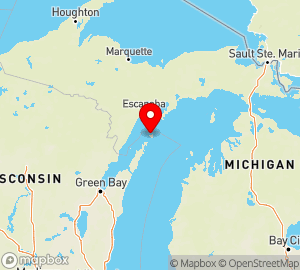Washington
1Washington
2Washington State Information

access.wa.gov
Area (sq mi):: 71299.64 (land 66544.06; water 4755.58) Population per square mile: 94.50
Population 2005: 6,287,759 State rank: 0 Population change: 2000-20005 6.70%; 1990-2000 21.10% Population 2000: 5,894,121 (White 78.90%; Black or African American 3.20%; Hispanic or Latino 7.50%; Asian 5.50%; Other 9.50%). Foreign born: 10.40%. Median age: 35.30
Income 2000: per capita $22,973; median household $45,776; Population below poverty level: 10.60% Personal per capita income (2000-2003): $31,779-$33,254
Unemployment (2004): 6.30% Unemployment change (from 2000): 1.30% Median travel time to work: 25.50 minutes Working outside county of residence: 18.20%
List of Washington counties:
Washington Parks
- US National Parks
- Urban Parks
- State Parks
- Parks and Conservation-Related Organizations - US
- National Wildlife Refuges
- National Trails
- National Scenic Byways
- National Forests
- Marine Sanctuaries
Washington
Forty-second state; admitted on November 11, 1889
Admission Day is observed in Washington by closing public schools (however, schools are expected to hold special patriotic and historic programs on the preceding Friday). Former significant anniversaries of statehood—the 25th, 50th, and 75th—were commemorated with speeches (by President Franklin D. Roosevelt in 1939) and ceremonies.
State capital: Olympia Nickname: Evergreen State State motto: Alki (unspecified American Indian language
“By and By”) State amphibian: Pacific chorus frog (Pseudacris regilla) State arboretum: Washington Park Arboretum State bird: Willow goldfinch or wild canary (Spinus tristis
salicamans) State colors: Green and gold State dance: Square dance State fish: Steelhead trout (Salmo gairdnerii) State flower: Coast or pink rhododendron (Rhododendron
macrophyllum) State folk song: “Roll on, Columbia, Roll on” State fossil: Columbian mammoth (Mammuthus columbi) State fruit: Apple (Malus sylvestris) State gem: Petrified wood State grass: Bluebunch wheatgrass (Agropyron spicatum) State insect: Green darner dragonfly (Anax junius Drury) State marine mammal: Orca (Orcinus orca) State ship: Lady Washington State song: “Washington, My Home” State tartan: Washington State Tartan State tree: Western hemlock (Tsuga heterophylla) State vegetable: Walla Walla sweet onion
More about state symbols at:
www.leg.wa.gov/Legislature/StateSymbols/
http://www.secstate.wa.gov/seal/symbols.aspx
More about the state at:
historylink.org/
SOURCES:
AmerBkDays-2000, p. 766
AnnivHol-2000, p. 189
STATE OFFICES:
State web site:
access.wa.gov
Office of the Governor4
302 14th St SW
PO Box 40002
Olympia, WA 98504
360-902-4111
fax: 360-753-4110
www.governor.wa.gov
Secretary of State
PO Box 40220
Olympia, WA 98504
360-902-4151
fax: 360-586-5629
www.secstate.wa.gov
Washington State Library 6880 Capitol Blvd S Olympia, WA 98504 360-704-5200 fax: 360-586-7575 www.secstate.wa.gov/library
Legal Holidays:
| Day after Thanksgiving | Nov 25, 2011; Nov 23, 2012; Nov 29, 2013; Nov 28, 2014; Nov 27, 2015; Nov 25, 2016; Nov 24, 2017; Nov 23, 2018; Nov 29, 2019; Nov 27, 2020; Nov 26, 2021; Nov 25, 2022; Nov 24, 2023 |
Washington
a state in the northwestern USA bounded on the west by the Pacific Ocean and on the north by Canada. Area, 176,600 sq km. Population (1970 census), 3.3 million, 70 percent of whom live in urban areas.
The state capital of Washington is Olympia, and the largest city and port is Seattle. To the west are the Coast Range of mountains, separated from the high Cascade Mountains (whose highest peak is the 4,392-m Mount Rainier) by a narrow valley of Puget Sound. To the east is the Columbia Plateau, a lava plateau through which the Columbia and Snake rivers have carved their courses. In the western section of the state the average temperature is 4° C in January, the average temperature in July is 16° or 17° C, and annual precipitation is 2,000 mm; in the east, the average January temperature is -2° or -3° C, average July temperature is 20° to 23° C, and annual precipitation is 400-500 mm. The western mountains are covered with coniferous forests (Douglas firs among others), and the plateau is a forest and grassland area.
Washington has the richest supply of hydroelectric energy in the USA (more than 15 million kilowatt-hours [kW-hr]). Large hydroelectric stations have been built there (primarily in the Columbia River basin), including the largest one in the United States, Grand Coulee Dam. In 1969 the overall production of electrical energy reached 11.6 million kW-hr; of this, 10.2 million kW-hr were produced by hydroelectric stations. In 1969, 290,000 people worked in manufacturing industries and 2,000 in extractive industries. Aerospace industries are the most important and are concentrated in the city of Seattle and its suburbs (for example, Boeing factories). Energy-intensive industries are highly developed and include aluminum smelting (plants in Spokane, Wenatchee, Tacoma, and elsewhere), iron smelting, electrochemical and atomic industries (the Hanford plutonium operations), and copper production, primarily from imported concentrates (Tacoma). There is a naval shipyard in Bremerton, as well as other shipyards in the port cities along Puget Sound. Washington is first in the United States in the lumbering and wood products industries, making use especially of its coniferous trees. Among its products from these industries are veneers and papers. There are oil refineries supplied by Canadian pipelines. Along the coast there are dairies and truck farms; in 1969 there were 1.3 million head of cattle, which included 210,000 dairy cows. In the fertile regions of the Columbia Plateau there are large wheat fields and, in irrigated areas, pasture lands and orchards. (These are mainly apple orchards and are concentrated in the area around Yakima.) Washington also has fishing and canning industries. (Salmon and halibut are common.) Seattle and other ports along Puget Sound are major links between the USA mainland and Alaska.
V. M. GOKHMAN